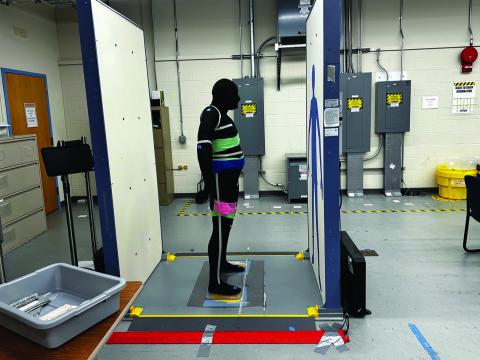Homeland Security Requires Quantum Change
"When I look at our adversaries around the world, what I see is that we can no longer kid ourselves into believing that we face challenges that will be easily boxed based on regions and categories."--The Honorable Michael Chertoff
The Honorable Michael Chertoff, former secretary of the Department of Homeland Defense, said that strategic convergence will distinguish the 21st from the 20th century in both threats and solutions. Speaking at the MILCOM 2009 luncheon today, Chertoff used the binary versus the quantum approach as an analogy to describe national security threats as well as the changes that must occur to deal with them. "In the 1990s, we had the tendency to view the world through a binary lens. On one side of the lens we had traditional military warfighting issues where we were dealing largely with nation-states as the adversary and where our capabilities were lodged in the military services and to some degree in the intelligence services," he stated. This state is what Chertoff called the "1" of the binary view; the law enforcement issues could be considered the "0." Each side of this digital divide included unique sets of capabilities, processes and authorities that governed how the military and law enforcement officials operated. "In reality, the neat division between war, national security and the military on the one hand and crime and law enforcement and police on the other was being overtaken by events, by reality. The facts were beginning to change," he offered. The terrorist attacks on September 11, 2001, were the result of those changes. Many lessons were learned that day, and chief among them was that process structures had made it very difficult to share information and tactics across that digital divide. "It was a rude awakening about the need to avoid this kind of distinction," Chertoff stated. But in addition to this lesson, the terrorist attacks "ripped the cover off" the sea change that was occurring in the security of the nation, he added. Chertoff says that these events changed the nation's leaders from looking at security through a binary lens and resulted in what he calls a quantum view of security. Quantum physics proposes that something such as a molecule can exist in a number of areas simultaneously. This is a good metaphor for where the U.S. is in security; threats the country faces not only exist in the two primary points of the military or police but also at many points in between. The challenges this situation poses are even more difficult to tackle than simply introducing a single architecture, he pointed out. "You have a whole series of legal, bureaucratic and technical structures that were erected under the old regime that are outmoded in dealing with this era quantum events," Chertoff stated. "When I look at our adversaries around the world, what I see is that we can no longer kid ourselves into believing that we face challenges that will be easily boxed based on regions and categories. We have got to tear the categories down and recognize that every threat we face can appear simultaneously as a military threat, a terrorism threat, a criminal threat and a community threat that directly impacts our civilian governments," he states. This means that communications capabilities must be retooled for the 21st century, Chertoff said. Military, intelligence and law enforcement agencies must be able to integrate their strengths, and this can be done-at least in part-by working through the private sector for solutions, he stated.




Comments